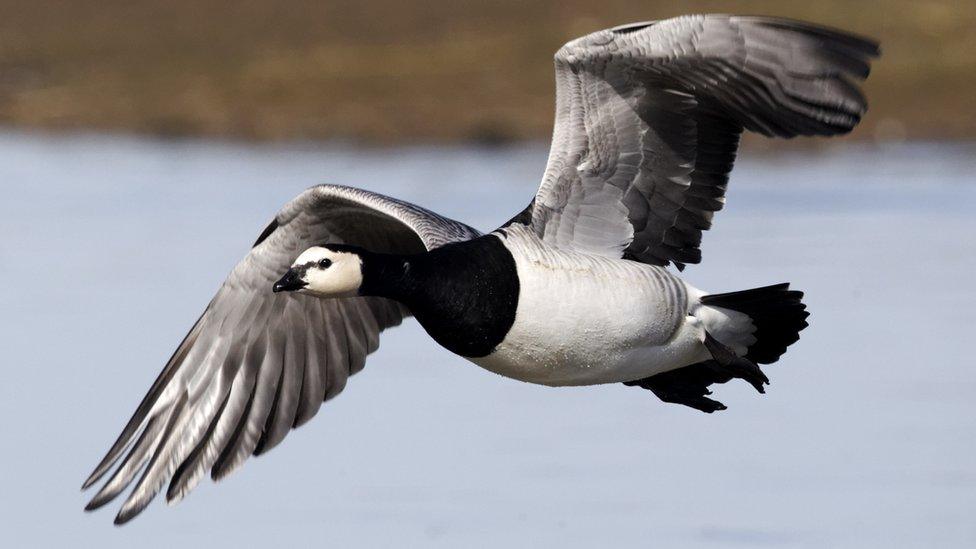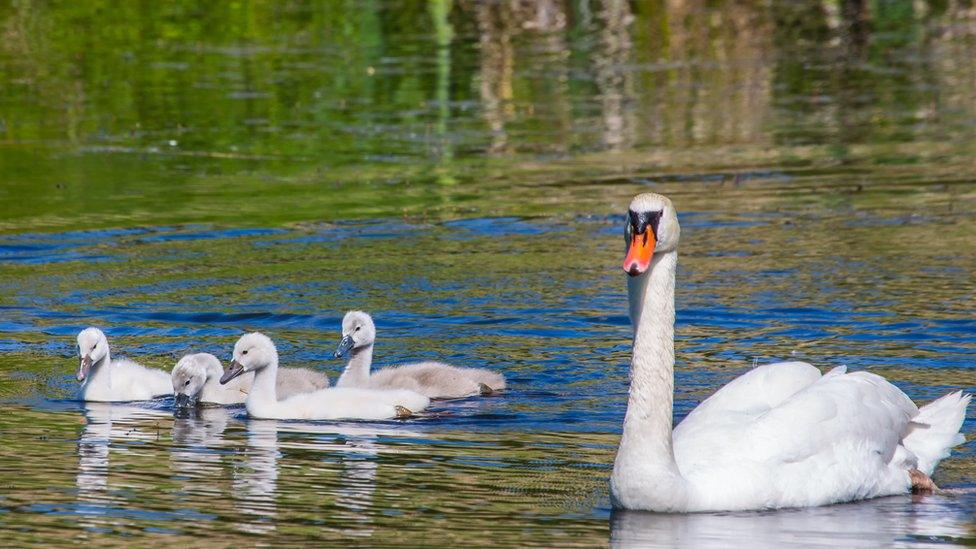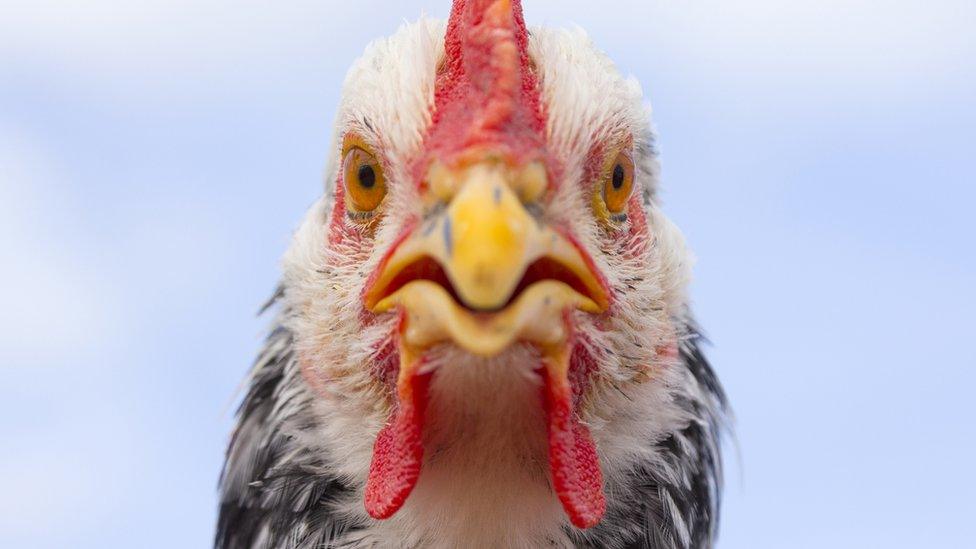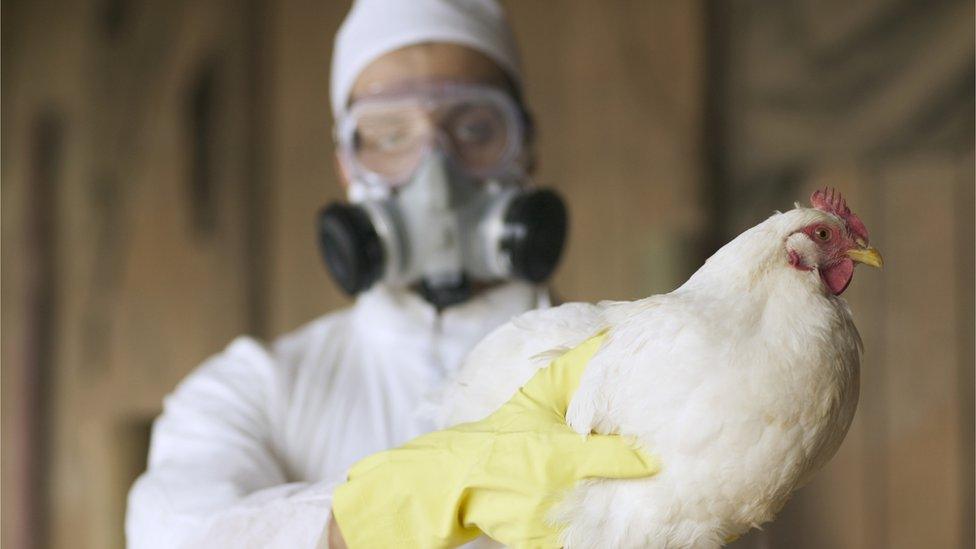Plans to limit avian flu risk as migrating birds return
- Published

Thousands of barnacle geese have died from avian flu
Plans have been unveiled to try and reduce the risk of avian flu as migrating birds return to Scotland.
Government agency NatureScot said it had recorded the condition in 50 different species since December.
Almost 1,200 cases have been found in dead barnacle geese on Islay, but incidences in the Solway Firth were not as high as the previous winter.
A surveillance network is being expanded to measure the impacts on seabird colonies.
Antibody sampling will take place on barnacle geese populations to establish whether they have built up a resistance to the disease.
Last year more than 300,000 chickens either died or were culled in Scotland because of bird flu.
But it has also had an impact on wild bird populations although the extent has been difficult to quantify.
Eileen Stuart, NatureScot's Deputy Director of Nature and Climate Change, said: "Like many, we are waiting anxiously for our breeding seabirds to return so that we can begin to assess how the populations are faring after last year's devastating outbreak.
"The work we are doing on sampling will help us better understand why this might be the case and whether immunity/resistance is building up in the different populations."

Mute Swans are one of the species have been impacted by the outbreak
About 2,800 sick or dead birds have been reported to Scotland's nature agency this year but it says that it is inevitably only a proportion of the overall deaths.
Among the species affected are mute swans, herring gulls and pink-footed geese.
The current avian influenza outbreak is the worst recorded, with almost 42 million cases across the world since it began in October 2021.
The World Organisation for Animal Health said more than 193 million birds have been culled.
Authorities have advised people not to touch or pick up dead birds, but to report them to the Department for Environment, Food and Rural Affairs.
Additional biosecurity measures are being planned in Scotland to allow ringing programmes to continue in the event of a further outbreak.
Similar precautionary measures will be introduced for high-risk seabird islands like Isle of May in the Firth of Forth.
Deputy chief veterinary officer, Jesus Gallego Garnica, said: "We know that Scotland's seabird populations were affected by avian flu last year. What is not yet clear is the full extent of the impact that the virus has had.
"This surveillance is critical as it allows us to track both where the virus is in the country and what birds have been affected. This information is also vital in informing our efforts to mitigate avian flu in poultry populations."
Related topics
- Published18 June 2024

- Published25 February 2023

- Published15 March 2023
